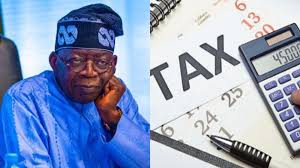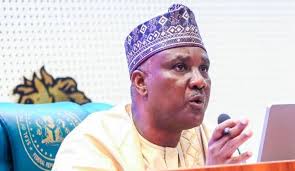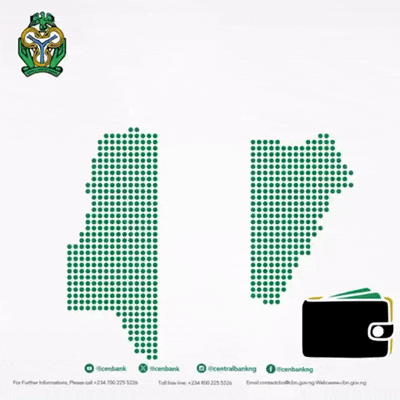However, while there is enough reason to cheer, some analysts, including, Bismarck Rewane of the Financial Derivatives Company, Friday Ameh, John Agbo, have called for some moments of sober reflections and introspection.
This is because of the skewness in the products growth in favour of those less critical to the economy.
They also deplored the inability of the country to meet her oil production quota due to theft and vandalisation, a situation that has continued to compound the nation’s economic challenges.
In fact, the aggregate real GDP stood at N17.29 trillion in the second quarter of 2022, a marginal decline of 0.37 percent when compared to N17.35 trillion recorded in Q1 2022.
The growth recorded in the review quarter also indicates the seventh consecutive quarter of GDP in the country, since the recession recorded in Q3 2020, despite its lack of inclusiveness.
A cursory look at the data showed that the agricultural sector accounted for 23.24 percent of the aggregate GDP, compared to 22.36% recorded in the previous quarter.
This is in spite of over one trillion Naira spent under the Central Bank of Nigeria (CBN)’s Anchors Borrowers Program
Also, the industrial sector contributed 19.4%, while services accounted for 57.35% of the GDP.
Meanwhile, the Agricultural sector grew by 1.2% year-on-year, the Services sector expanded by 6.7%, while the Industrial sector contracted by 2.3%, a further decline when compared to the 6.81% decline recorded in the previous quarter.
Most importantly, of the 46 activities tracked by the NBS, only 33% expanded compared to 54% in Q1’22.
More worrisome is the fact that most of the sectors that slowed or contracted (manufacturing, agriculture, etc) are the major employers of labour.
The implication is that there will be a limited impact on unemployment, which is stubbornly high at 33%.
The non inclusivity and fragility of the growth is another sore area as the rising Purchasing Managers Index may be creating false impression on the performance of the economy.
A purchasing manager, also known as a purchasing director or supply manager gives direction of activities in some sectors, particularly, manufacturing.
It seeks the best available quality for the lowest price,evaluate suppliers, negotiate contracts, and review product quality.
The purchasing Managers Index, which is one of the most efficient predictors of cyclical trends, has been oscillating in the last 7 months.
An interesting observation is that new orders increased consistently in the last 5 months.
The analysts are wondering as to whether manufacturers are optimistic about the future or they are hedging against a falling naira.
The possibility is that the fear of dollar scarcity could mean manufacturers are rather front- loading their inventory requirements, creating an illusion of expansion as against the real picture.
“This will manifest in a possible decline in purchases and ultimately slow GDP growth in the coming quarter, “ says Rewane.
The report also showed that the oil sector dipped by 11.77 percent year-on-year in Q2 2022, compared to a contraction of 26.04 percent recorded in Q1 2022.
The contraction in the sector’s GDP is following the decline in crude oil production capacity.
Specifically, Nigeria recorded an average daily oil production of 1.43 million barrels per day (mbpd), lower than the daily average production of 1.61mbpd recorded in the same quarter of 2021 by 0.18 mbpd and lower than the first quarter 2022 production volume of 1.49 mbpd by 0.06mbpd.
The Oil sector contributed 6.33 percent to the total real GDP in Q2 2022, down from the figures recorded in the corresponding period of 2021 and the preceding quarter, where it contributed 7.42 percent and 6.63 percent respectively.
But the non-oil sector grew by 4.77 percent in real terms during the reference quarter (Q2 2022).
This rate was lower by 1.97 percent points compared to the rate recorded same quarter of 2021 and 1.31 percent points lower than the first quarter of 2022.
This sector was driven in the second quarter of 2022 mainly by Information and Communication (Telecommunication); Trade; Financial and Insurance (Financial Institutions); Transportation (Road Transport); Agriculture (Crop Production) and Manufacturing (Food, Beverage & Tobacco), accounting for positive GDP growth.
In real terms, the non-oil sector contributed 93.67 percent to the nation’s GDP in the second quarter of 2022, higher than the share recorded in the second quarter of 2021 which was 92.58 percent and higher than the first quarter of 2022 recorded as 93.37 percent.On the whole, the Nigerian economy continued on a positive trajectory, growing for the seventh consecutive quarter since the covid-19 induced recession recorded in the third quarter of 2022.
The growth recorded in the past two years is following significant expansionary monetary policies by the CBN, keeping the MPR at 11.5 percent .
However, due to the rising cost of goods and services, with inflation rate already at a 17-year high of 19.64% in July 2022, the apex bank, in July, raised the interest rate to 14 percent in a bid to curb rising prices.
The policy interest rate is a rate that the monetary authority CBN sets in order to influence the evolution of the main monetary variables in the economy (e.g. consumer prices, exchange rate or credit expansion, among others).
A rise in interest rates is commonly used to curb inflation, currency depreciation, excessive credit growth or capital outflows.
On the contrary, by cutting interest rates, CBN might be seeking to boost economic activity by fostering credit expansion or currency depreciation in order to gain competitiveness.
The implication, also is that a decrease in the policy rate encourages people to spend money, while an increase in the policy rate, on the other hand, discourages people from spending.
These purchasing decisions will influence the price of goods and services according to the law of demand and supply.
To the analysts, there is always the tendency of disconnection between the policy and market rates.
Also, some products selected by CBN for special intervention to reduce food importation and conserve foreign exchange may have fallen short of the target contained in the apex bank’s five-year policy plan (2019-2024).
CBN expects that gains of the ABP could be used to boost their production, create employment, diversify the economy to increase receipts from non oil sectors of the economy.
Some of the products are rice, maize, cassava, cocoa, tomato, cotton, palm oil, poultry, fish, and livestock/dairy.
Unfortunately, some of these products are featuring as the main drivers of inflationary pressures.
Despite spending N1.01 trillion under the ABP since its inception to support millions of smallholder farmers with improved seedlings and finance, particularly in these products, food imports in Africa’s most populous country have continued to hit new highs yearly.
ALSO READ:
Non-Oil Sector Grows Nigeria’s GDP By 3.54% In Q2’22 In fact data from NBS show that the value of food imports hit N2 trillion in 2021, up 41 percent when compared to the N1.2 trillion spent in 2020.
The imported food products accounted for 9.44 percent of the country’s total imports for the year.
With the high level of importation of even staple food items, lack of synergy and complimentary between the fiscal and monetary policy measures, it is left to be seen how crisis in the foreign exchange market, alarming rate of the depreciating naira, among others, will be checkmated to reduce poverty in the land.












